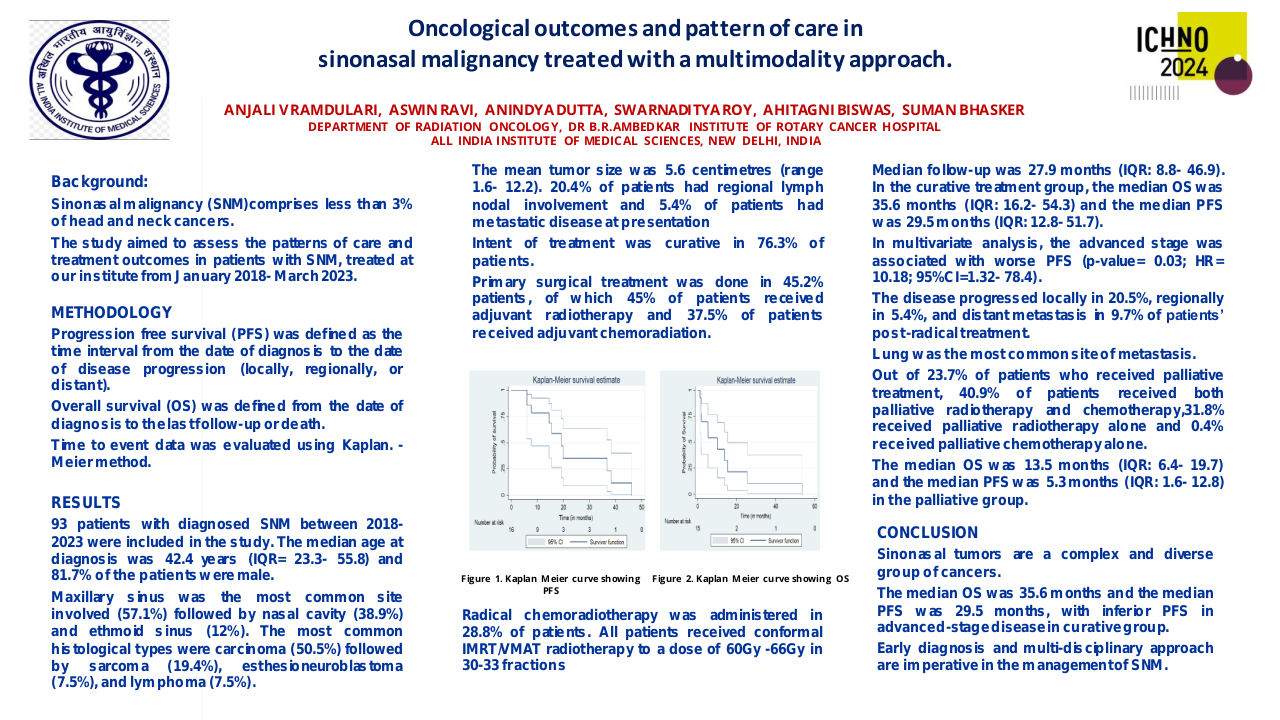Prognosis and treatment strategies of primary B-cell nasopharyngeal non Hodgkin lymphoma: A series of 12 cases
Purpose/Objective
Primary non-Hodgkin's lymphoma of the nasopharynx is a rare tumor that represents less than 10% of head and neck lymphomas (1). This localization is seen at any age. Treatment is based on polychemotherapy and radiotherapy. We describe the diagnostic, therapeutic and prognostic aspects of 12 cases of nasopharyngeal lymphoma.
Material/Methods
Retrospective study including 12 patients diagnosed with large B-cell non-Hodgkin's lymphoma of the nasopharynx treated between 2005 and 2022 at the Salah Azaiz Institute in Tunisia.
Results
The average age at diagnosis was 60.5 years (18 - 76 years). Half of the patients (53.8%) were 60 years or older with male predominance. Nasal obstruction was the most frequent symptom (n=8) followed by cervical adenopathy (n=4). The majority (75%) were classified as stage IIE according to the Ann Arbor classification and only 25% as stage IE. Seven patients had a low intermediate risk (age > 60 years). Only one patient had two unfavorable risk factors (age > 60 years and LDH above normal). Nasopharynx MRI was initially performed in only 16.7%. PET CT was not available. All patients received chemotherapy: 6 R-CHOP in 6 cases, 6 CHOP in 2 cases and 6 CEOP in 4. Among the 7 patients in complete response after chemotherapy, 6 had had the 6 R-CHOP protocol. The median period between the end of chemotherapy and radiotherapy was 3.5 months. All patients had Waldeyer’s ring radiotherapy at a dose of 54 to 36 Gy with conventional fractionation. Supraclavicular irradiation was performed in patients classified as stage IIE. The response to treatment was considered complete in 6 patients. Node recurrence was observed in 50% of the population after a mean delay of 3 years, regardless of chemotherapy and the dose received in radiotherapy. Patients with recurrence were treated with chemotherapy. No correlation was found between age > 60 years and recurrence. Stage IIE did not correlate with a higher recurrence rate. Overall survival at 2 years was 85%.
Conclusion
There is no therapeutic standard for nasopharyngeal lymphoma. Their prognosis is similar to other non-Hodgkin's lymphomas and remains generally good.
(1) Non-Hodgkin lymphoma of the cavum: prognostic factors and therapeutic protocols Saloua Ouraini, Ismail Nakkabi, Fouad Benariba






